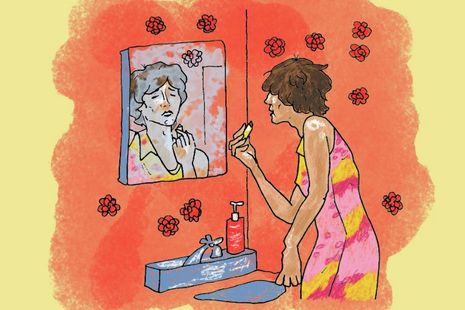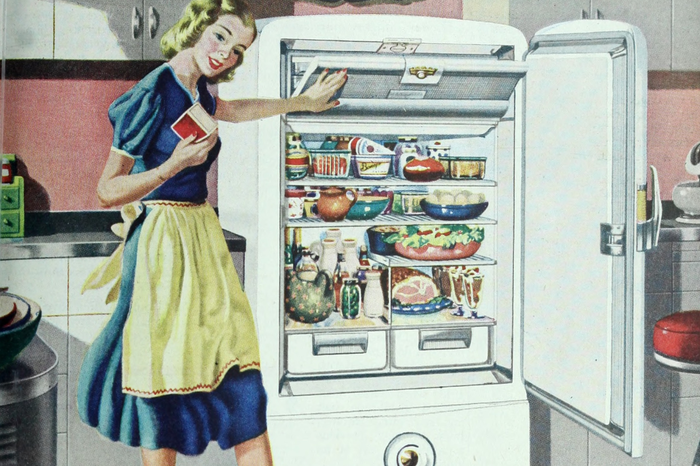Is it my turn to be ‘in’ yet?
Archayah Thayaparan explores the history of fluctuating beauty standards, highlighting the impossibility of living up to them

“Nothing tastes as good as skinny feels” – one of the most damaging mantras of the fashion world was popularised by Kate Moss in 2009. We’ve all heard and have rightfully shunned it – yet it seems to be making a comeback online. Though it may not be as blatant, hidden in the rise of the ‘SkinnyTok’ subculture on TikTok and decline in size-inclusive campaign imagery, society has veered away from the body positivity movement of the 2010s. This is just one of the many changes that the fluctuating beauty standards have undergone over the last few decades, usually to the detriment of women’s mental health.
The concept of the ‘supermodel’ emerged in the ’80s. This decade brought us Cindy Crawford and Iman, who among others set the high expectations of being toned and athletic, not just thin, which could be achieved solely in the kitchen; one unattainable standard replaced with another. As VCRs began to dominate the market, Jane Fonda entered the living room of millions of women. She popularised aerobics so that they did not need to leave their homes to exercise and experience the joys of improved endurance and movement.
“This dynamic and lively craze was reflected in the fashion of the time, which consisted of bright colours, big hair and bold accessories”
The omnipotent women trope that was born in this era fed into this. Yes, it made it easier for women who were balancing their new careers, family life and sculpted physique, but it was also exhausting, perhaps even more so than it was liberating. This dynamic and lively craze was reflected in the fashion of the time, which consisted of bright colours, big hair and bold accessories. Alternatively, powersuits characterised by shoulder pads and puffy sleeves, helped create the illusion of broad shoulders and a slender waist to signify self-assurance, whilst squeezing into the rigid ideals.
Eventually the goal of vitality became fragility, which morphed into the disturbing dominance of ‘heroin chic’ style in the ’90s. Defined by extreme thinness, sunken eyes and pale skin, this gained momentum as women and girls consumed media that idealised underweight models and actresses. To maintain their waif-like structure, they often resorted to using unhealthy means, including drug consumption, chain smoking, and extreme dieting – all under the ruse of ‘stylistic choices’.
Engagement with these behaviours was once more common among lower-class groups but expanded to middle class groups, driven by the demoralisation of young people as they faced economic pressures from the recession in the early '90s. As a consequence, they were forced to enter a limited job market, with science and innovation not flourishing as expected, causing the birth of a grungy, nihilistic style. The overdose of a heroin chic photographer, Davide Sorrenti, in 1997 should have been an immediate wake-up call to the dangers of this lifestyle, but it wasn’t until a decade later that culture began to change. A fierce reaction was evoked from the fashion industry when Isabelle Caro, a severely underweight model, agreed to pose naked for a harrowing eating disorder campaign, leading to the ban of size zero models from the runway. Unfortunately, it’s rather telling that change is only made when the issue becomes a PR liability.
“This time, the cultural obsession was appeased by incisions and stitches: an irreversible fix to satisfy a fleeting inclination”
The 2010s were supposed to be different, and actually did start off that way. In 2012, the Body Positivity Movement began through social media. Bloggers and influencers, such as Nicolette Mason, were given a platform to draw visibility to mid-sized and plus-sized body types, encouraging confidence among those who had been shunned by the previous thin-ideal beauty standards.
Eventually, this expanded to include people of colour and those with disabilities. Becoming apparent first in the media, large brands such as Savage x Fenty started embracing plus-sized models in their campaigning. The incorporation of these models quickly spread to the runway, with brands such as Christian Siriano deliberately featuring a diverse model lineup. Regardless, the Kardashians rose to fame with the 2007 premiere of their reality TV show, Keeping Up with the Kardashians, letting them reshape our bodily aspirations once again. Together, these made the hourglass figure more appealing to the public eye – the fact that the number of BBLs has more than doubled since 2000 is no coincidence. This time, the cultural obsession was appeased by incisions and stitches: an irreversible fix to satisfy a fleeting inclination.
The ideal has bounced from boyishly thin to corset-sculpted curvy and everything in between in the last half a century. I can assure you that whatever is desired currently won’t be in a few years from now. With every turn, women are quietly pushed into editing themselves to fit what’s now in style with almost no method out of bounds. Although standards may keep shifting, societal pressure will always maintain its firm hold – ultimately, it was never about beauty, just control. When will we step off the carousel and stop moulding ourselves into the latest trend?
 Comment / Plastic pubs: the problem with Cambridge alehouses 5 January 2026
Comment / Plastic pubs: the problem with Cambridge alehouses 5 January 2026 News / Cambridge academics stand out in King’s 2026 Honours List2 January 2026
News / Cambridge academics stand out in King’s 2026 Honours List2 January 2026 News / Cambridge businesses concerned infrastructure delays will hurt growth5 January 2026
News / Cambridge businesses concerned infrastructure delays will hurt growth5 January 2026 News / AstraZeneca sues for £32 million over faulty construction at Cambridge Campus31 December 2025
News / AstraZeneca sues for £32 million over faulty construction at Cambridge Campus31 December 2025 Interviews / You don’t need to peak at Cambridge, says Robin Harding31 December 2025
Interviews / You don’t need to peak at Cambridge, says Robin Harding31 December 2025










